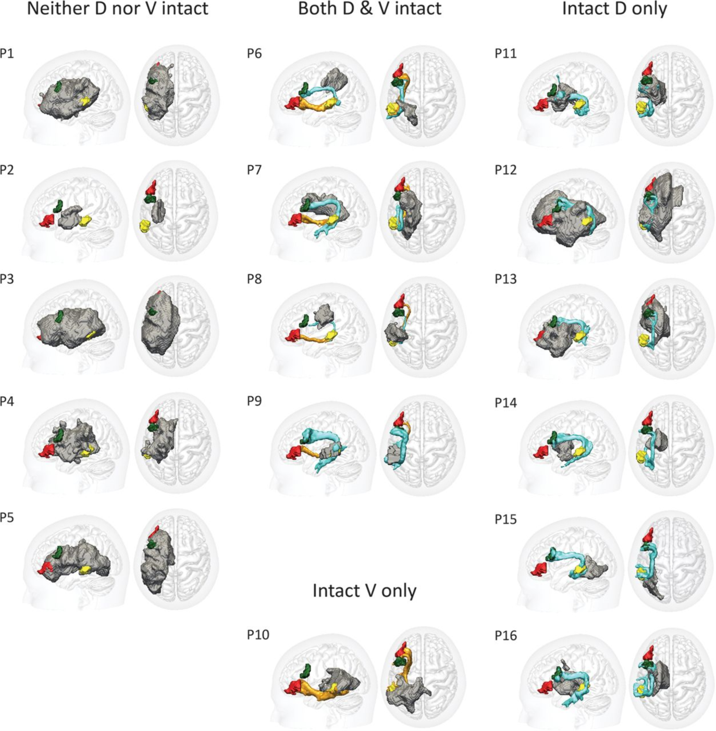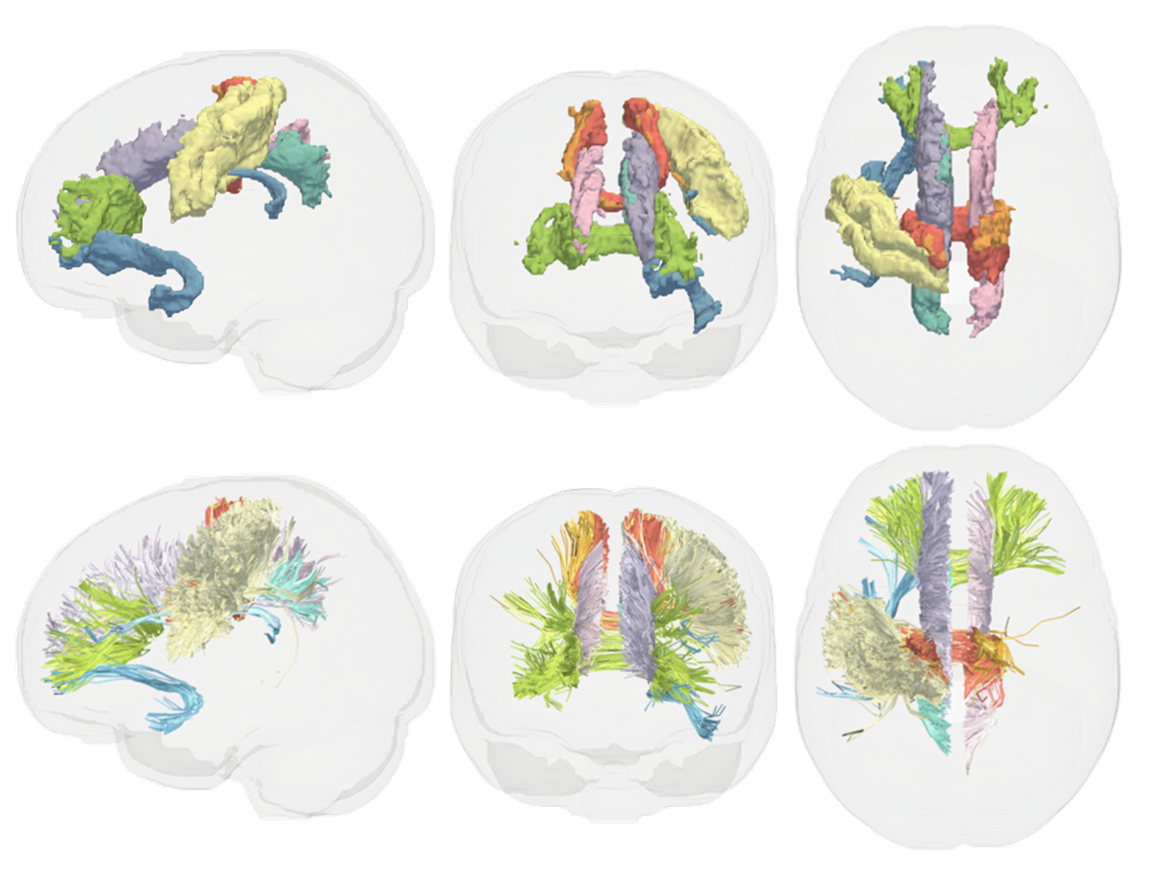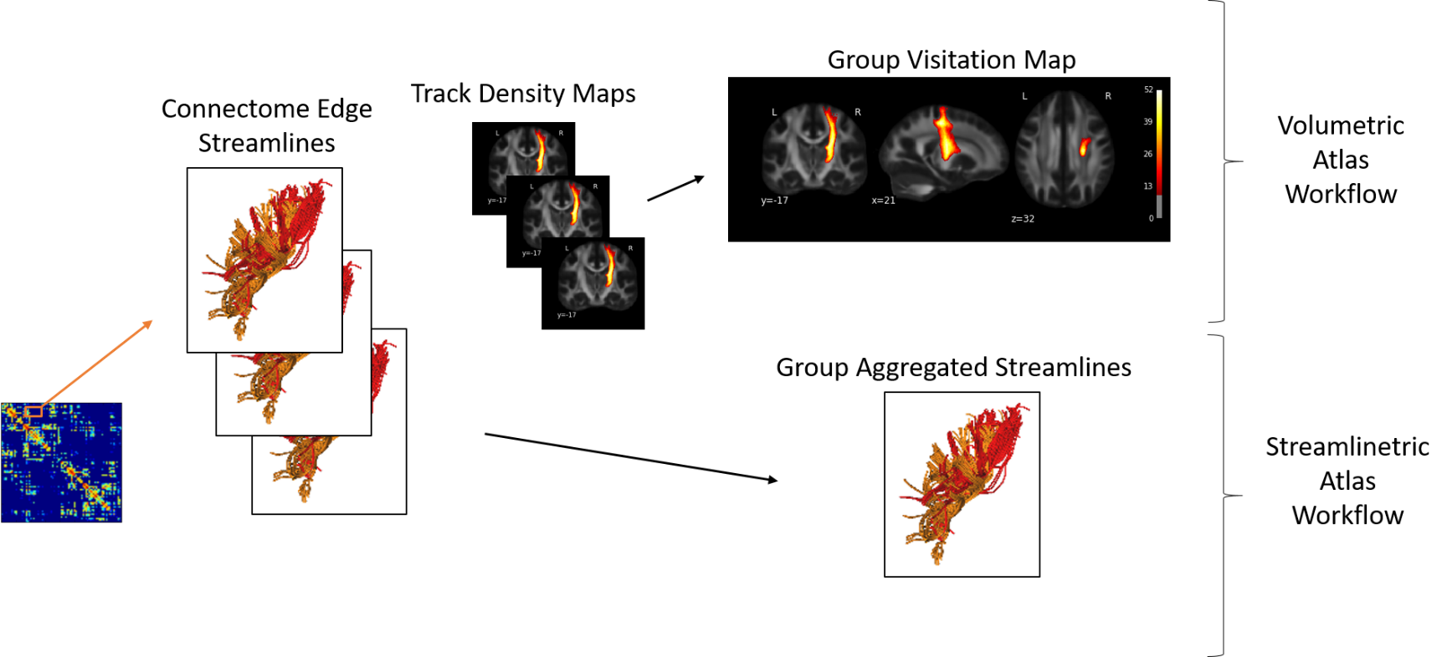
The effects of white matter damage on cognitive and neural function is a subject of major interest for the group. Earlier work studied how different spatial profiles of damage following stroke resulted in differential types of linguistic impairments. A large part of our current work asks similar questions from a more systems level perspective: what is the impact of a given spatial profile of damage on the topological structure and dynamic behaviour in connectome-based neural mass models?

In order to help address questions like this, we are developing a new software library, ConWhAt, for ‘connectome-based white matter atlas analysis’. This allows the construction of ‘damaged’ brain networks for a given spatial profile of damage, obviating the need to run complicated tractography analyses in individual patients.

Together with Jed Meltzer’s team from the Rotman Research Institute at Baycrest hospital, we are also beginning to investigate physiological changes in perilesional tissue following stroke, and how brain stimulation (informed by computational modelling) can be used to target and renormalize abberant activity in these regions.